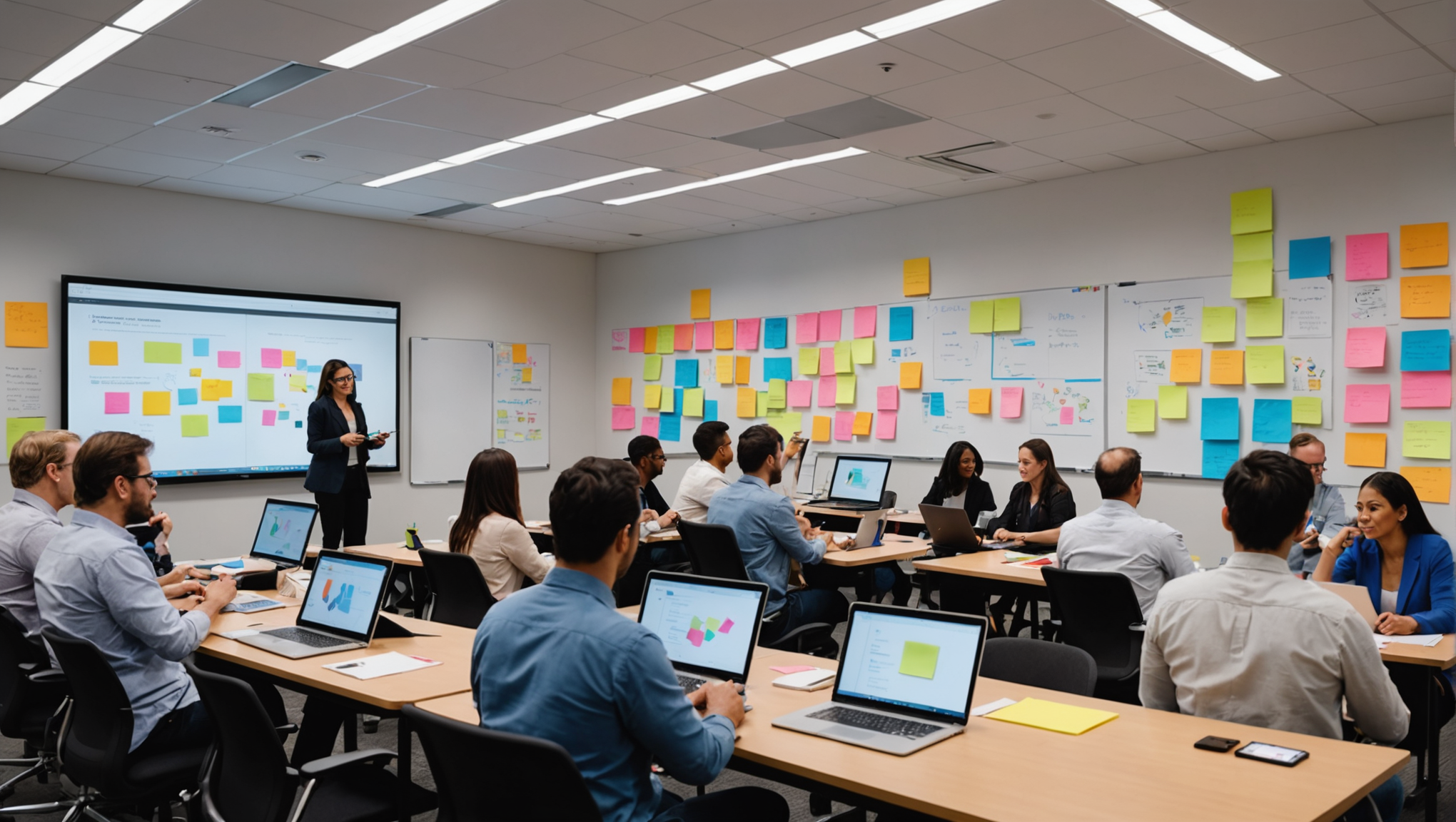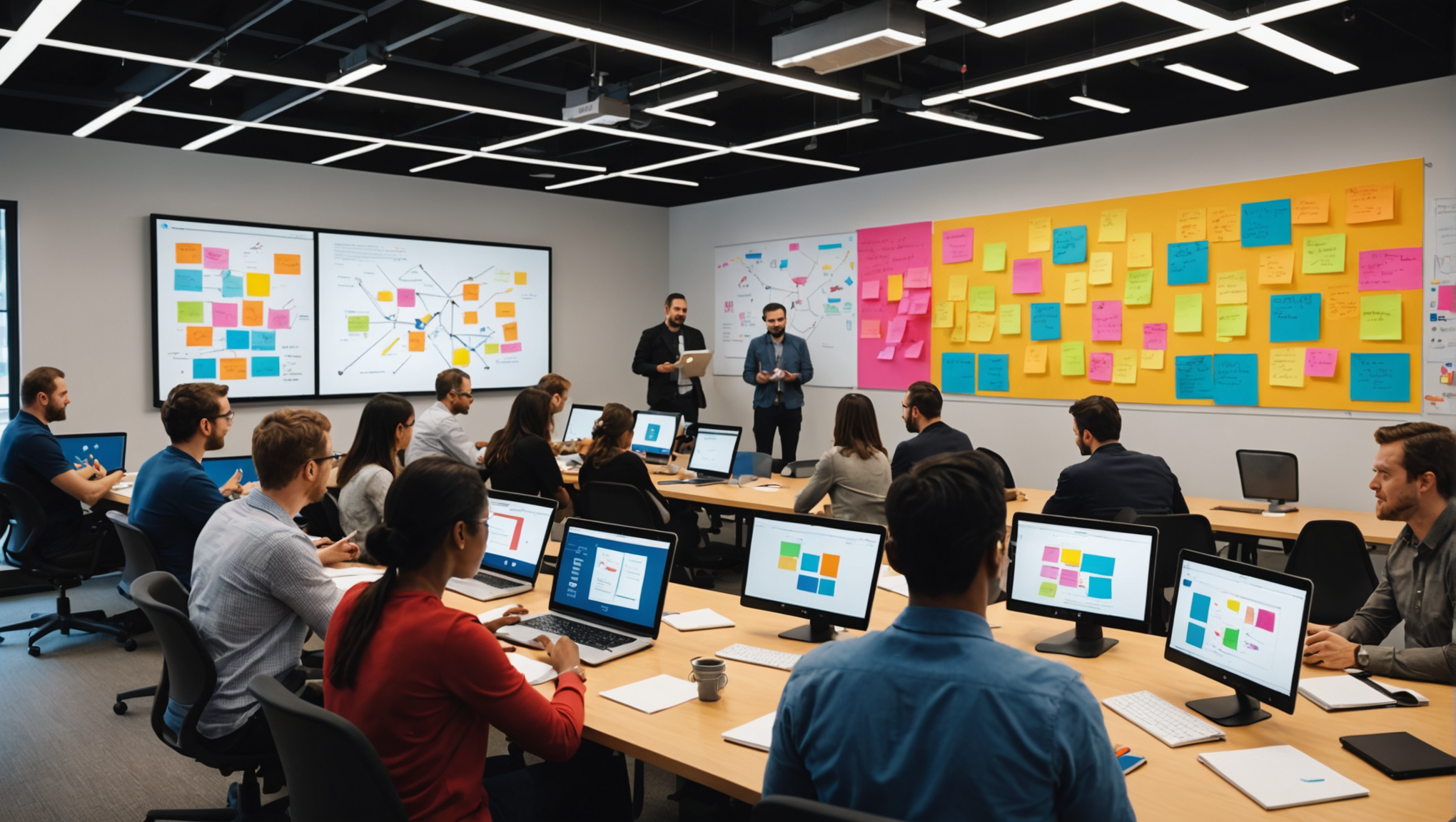In an increasingly distanced world, creativity and innovation must adapt and reinvent themselves. Virtual design thinking workshops have emerged as an essential method to foster collaboration and ideation remotely. The challenges of connecting participants and stimulating their engagement can be overcome with suitable digital tools and careful preparation. By implementing proven practices, every member can actively participate, ensuring impactful and optimized results. Let’s dive into the art of creating effective and inspiring virtual workshops that can reveal the full potential of creative groups, whether gathered physically or not.
🔥 Nous recommandons Ideamap
Ideamap est l’outil idéal pour un brainstorming ou un projet collaboratif. Grâce son interface facile et à ses fonctions IA, Ideamap booste votre créativité tout en favorisant une meilleure organisation de vos idées pour atteindre vos objectifs.
|
IN BRIEF
|
In the era of remote work and distance collaboration, designing virtual design thinking workshops becomes a key challenge to harness the full power of collective ideation. This article guides you through best practices, tools, and strategies to ensure the success of your virtual workshops, even when participants cannot meet physically.
Understanding design thinking in a virtual context
Design thinking is a user-centered approach that fosters empathy and encourages creativity. In a virtual setting, it is crucial to maintain the essence of this method while adapting to the specificities of online interactions. This means thinking differently about how to create an environment conducive to creativity and engagement.
Key principles to keep in mind
There are several key principles to adhere to when creating a virtual design thinking workshop. First, start by defining clear objectives and sharing them with all participants. Next, iteration, the creation of prototypes, and continuous testing with users should be integrated, even from a distance. Finally, do not forget to create a space that fosters collaboration and the exchange of ideas.
Choosing suitable tools for facilitation
Digital tools are essential for effectively facilitating a design thinking workshop. Platforms like Miro or MURAL are ideal for creating virtual post-its, drawing diagrams, and structuring ideas. Using these tools allows simulating an in-person workshop experience and ensures real-time interaction.
The importance of technology
The choice of technology is critical. Ensure that all participants are proficient with the tools before the workshop begins. Provide them with a training session or a tutorial to familiarize them with these tools. This will help reduce technical stress on the day and optimize discussions and ideation.
Preparing a stimulating framework
To ensure engagement and stimulate innovation, organize the workshop in distinct phases that facilitate reflection and idea sharing. Use brainstorming techniques, like Six-To-One, to encourage contributions from everyone. Alternate between individual work and collective discussions to help maintain energy and enthusiasm. For more tips on facilitating workshops, check out our comprehensive guide.
Fostering a positive environment
A trustful environment is crucial. Facilitators should encourage free speech and value all ideas, even the boldest ones. Creating sharing rituals and moments for feedback promotes a positive and collaborative atmosphere. Add a playful touch to the workshop to lighten the mood and encourage participants to get more involved.
Evaluating and adjusting practices
Once the workshop is over, it is essential to evaluate its effectiveness. Gather feedback to understand what worked well and what can be improved. This self-evaluation process helps optimize future workshops and ensure they meet participants’ needs. To avoid pitfalls, check out our article on the pitfalls to avoid in the implementation of design thinking.
Documenting results and next steps
Don’t forget to document the process and outcomes of the workshop. This can take the form of a report or a concise presentation to share with participants and other stakeholders. Additionally, it is important to define next steps and assign responsibilities to ensure that generated ideas do not remain as dead projects.
Conclusion: unleashing creativity online
By following these practical tips to create effective virtual design thinking workshops, you will increase your chances of generating innovative ideas while collaborating remotely. More than ever, creativity should be at the heart of our interactions, even when they take place online. To delve deeper into the subject and unleash your creative potential, explore resources such as ideation workshops and brainstorming techniques or the power of ideation. This new way of working is not just a response to physical distance but an opportunity to reinvent the creative process.

Conclusion: The art of the virtual workshop in Design Thinking
Creating effective virtual design thinking workshops requires special attention to group dynamics and participant engagement. As the world adapts to new methods of remote collaboration, it is essential to leverage digital tools to enhance interaction and creativity. Using platforms like Miro, for example, not only simulates the physical experience of a workshop but also integrates intuitive tools like virtual post-its for brainstorming and sorting ideas. These resources facilitate an interactive experience where each participant can contribute significantly.
It is also crucial to prepare the workshop well in advance. This includes selecting appropriate tools, creating a structured agenda, and defining clear objectives. Thorough preparation ensures that all participants are on the same wavelength and understand the purpose of the session. Furthermore, to energize engagement, consider integrating moments of breaks and camaraderie, allowing participants to reconnect and share in a less formal setting.
Finally, the facilitation of the workshop should be designed to encourage creativity and participation. By promoting feedback and establishing a culture of listening, you create an environment conducive to innovation. During workshops, don’t forget to explore different collaboration techniques, such as working in small groups or co-creation sessions. This can bring new perspectives to the generated ideas, enriching the design thinking process.
By combining technology, preparation, and thoughtful facilitation, you will be able to design virtual design thinking workshops that are not only functional but also inspiring and engaging. With the right approach, remote design thinking can become a true innovation lever for your team.














